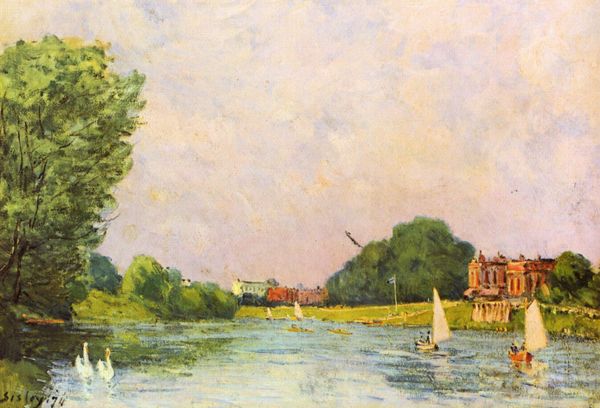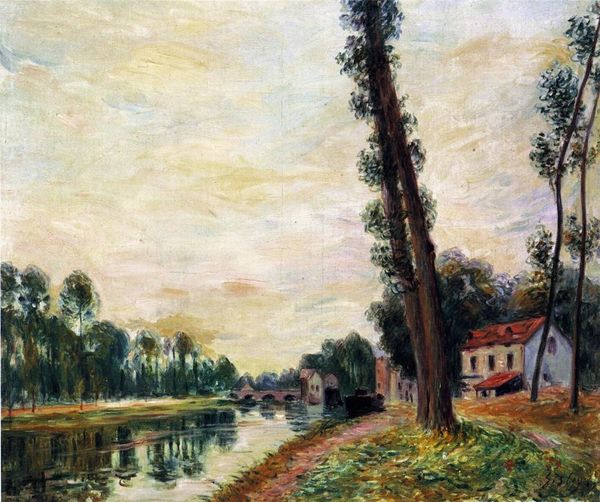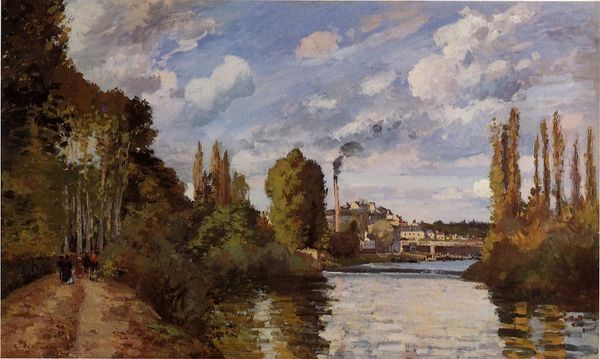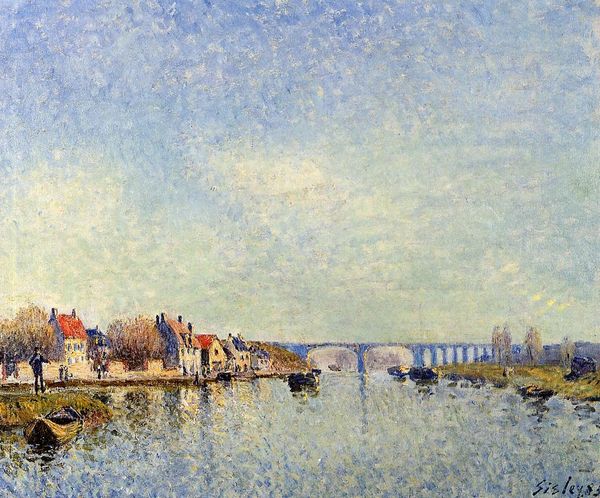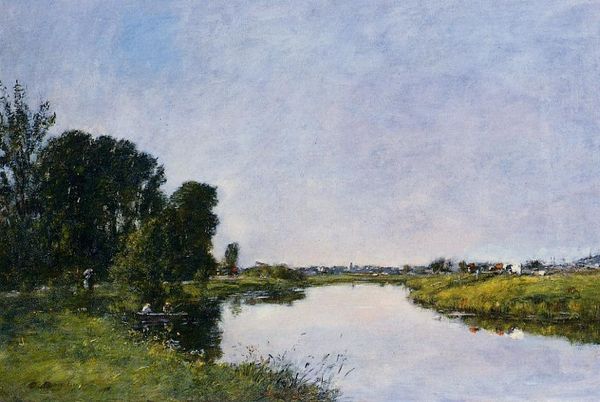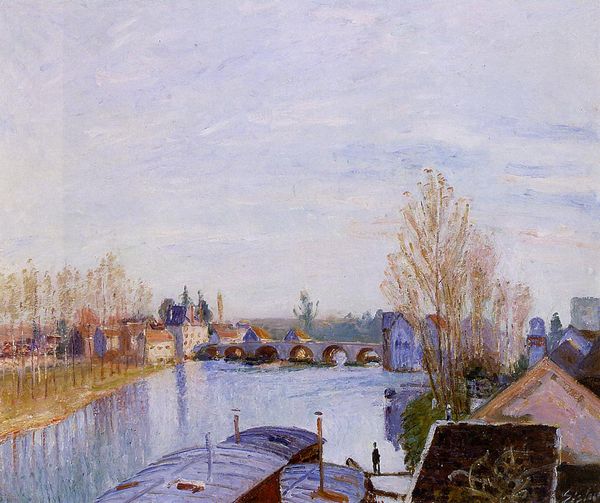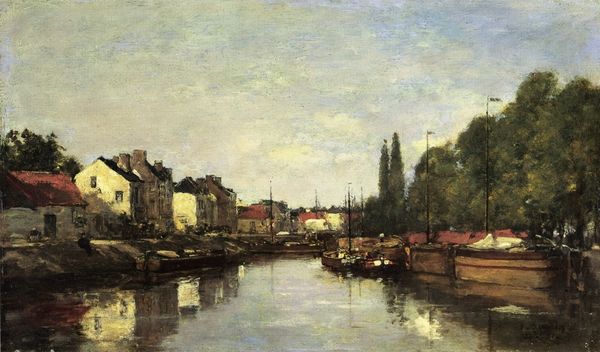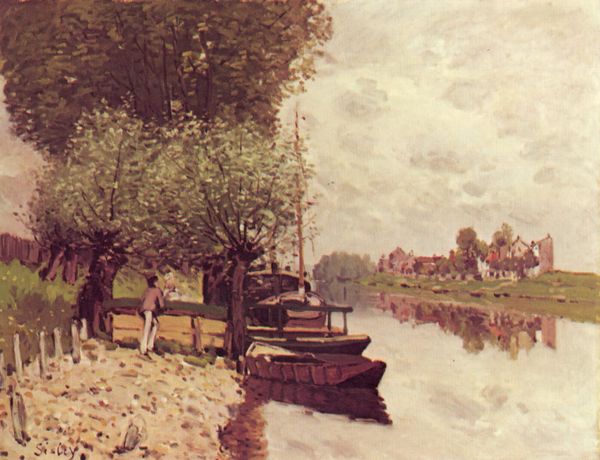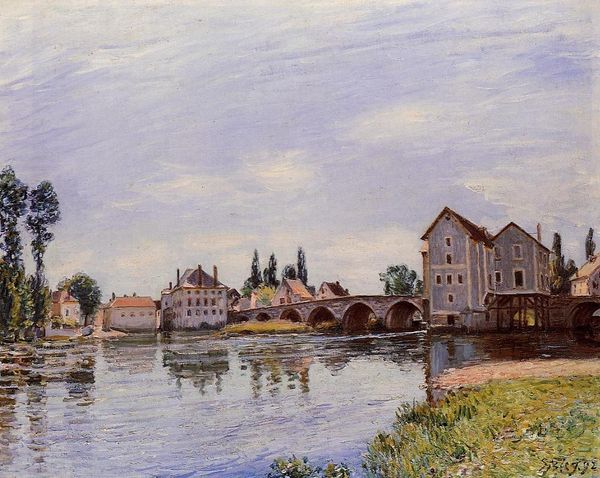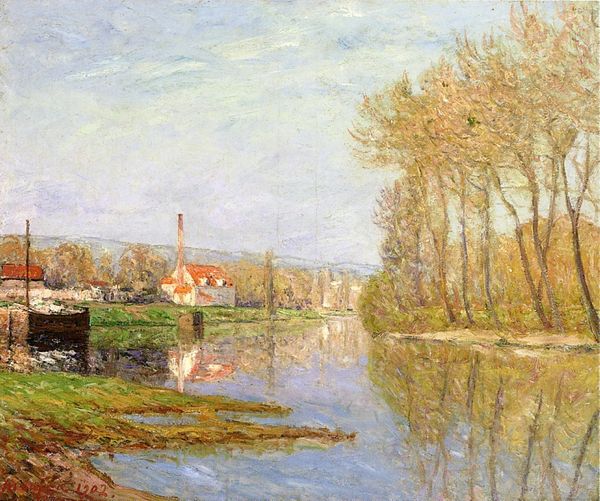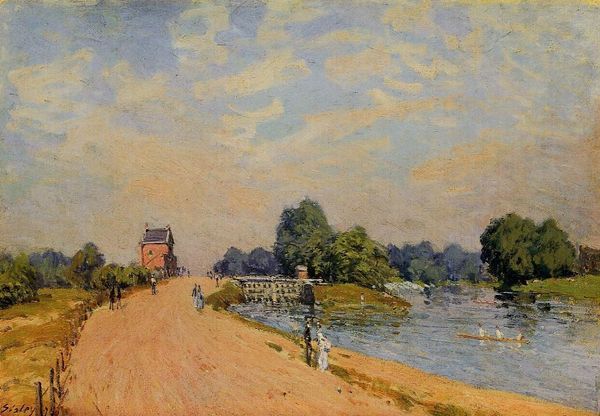
painting, oil-paint
#
painting
#
impressionism
#
oil-paint
#
landscape
#
oil painting
#
cityscape
Dimensions: 50 x 65 cm
Copyright: Public domain
Curator: I find the interplay of light and shadow in this cityscape remarkably serene. The colors evoke a sense of quietude. Editor: There's a tactile quality to the application of the paint, isn’t there? You can almost feel the layering and the textures built up. I wonder about the artist's physical experience creating it. Curator: This is an oil painting by Camille Pissarro. He called it "The Railway Bridge, Pontoise." Given Pissarro’s dedication to capturing everyday life and his anarchist leanings, this work raises questions about industrial development intersecting with the landscape, and how it affects those living there. Editor: The railway bridge seems almost secondary, doesn't it? It's seamlessly integrated. I am curious about the types of pigments Pissarro would have used, the base on which he would paint it, the social factors impacting his choices. Curator: Absolutely, it challenges the romanticism of earlier landscapes. The bridge itself symbolizes progress but Pissarro positions it within the lived reality of the town and the land. We might ask what is progress for some can look very different for others. There are people who lived in the countryside while trains and railways brought progress and mobility to some individuals but disruption to others. Editor: I agree that the landscape gives the feeling of an older life meeting the promises of modern industry. Pissarro's brushwork also catches the fleeting nature of light reflecting on water; a difficult thing to master as any artisan working with such elements might agree. Curator: Right, it encapsulates the transition happening in France, post the Franco-Prussian War and during the early days of the Third Republic. A very hopeful and very conflicted period of reconstruction. The work subtly gestures to the societal shifts happening. Editor: Thinking about the act of painting itself, how did Pissarro’s choice of location and weather conditions on that specific day influence his execution? And what about the societal systems that enabled or restricted access to materials and markets for Impressionist painters? Curator: I appreciate you bringing it back to the conditions. Understanding the role the academy played, or did not play, in the Impressionists' work shows how institutional structures can affect art history. Editor: And influence access and the choice of tools. Ultimately this focus also opens doors into broader socioeconomic questions and historical contexts surrounding artistic production at that specific moment in time. Curator: Reflecting, Pissarro presents the industrial world as an integrated part of everyday experience, but this invites viewers to consider whose everyday life. Editor: For me, analyzing the labor inherent in the creation itself allows for a deeper appreciation, acknowledging art is more than simply 'inspiration' but tangible stuff fashioned by specific people in unique contexts.
Comments
No comments
Be the first to comment and join the conversation on the ultimate creative platform.
